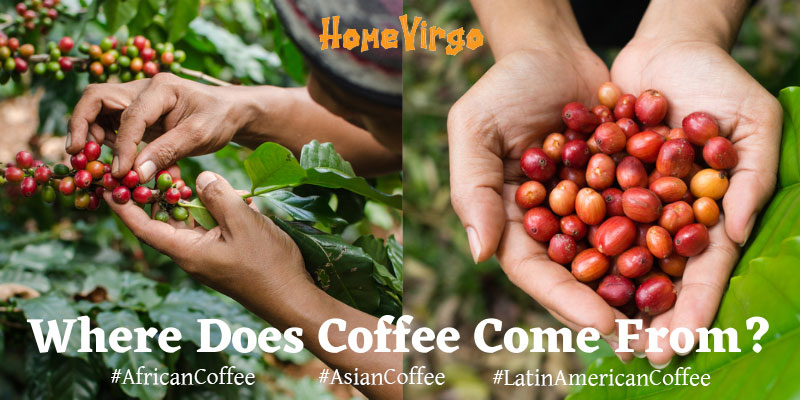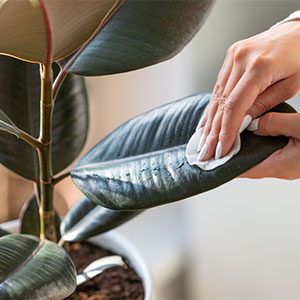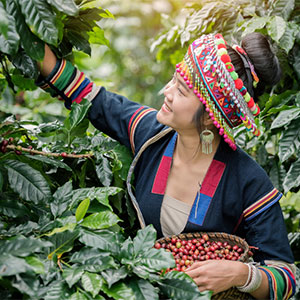Where Does Coffee Come From?

Coffee was discovered in the 15th century. From then, time changes, and so does the world. Coffee has spontaneously come from the old world to a new world. But do you know exactly where does coffee come from?
If you don’t know, it’s Ethiopia. Coffee was first discovered in Ethiopia, and there’s an interesting story behind it, pin it for later, we’ll share it with you.
To know everything coffee such as which plants coffee comes from, which countries are top in producing coffee, and a whole lot more, read on, it’s worth reading!
Where Does Coffee Come From?
Okay, It’s possible to answer this question in more than one way. If we first answer literally, we can simply put, coffee plants, yes, it’s coffee plants from where coffee beans come. But geographically, there is evidence that coffee’s first species was found in Ethiopia.
And, the coffee tale of Ethiopia is from the 9th century and this tale is kind of popular. There was a goat farmer named Kaldi, he found his goats became hyperactive after they ate berries from coffee plants. And, the goats got so much energy as they wouldn’t even sleep.
After that, Kaldi got the same energetic feelings after trying the berries himself. He worked as a spreader by bringing the berries to a local monastery where the monks tasted it as well. This is how coffee’s stimulating power started spreading all over the world.
The Coffee Plants
So, in the literal meaning, coffee plants (one type of shrub) are where coffee beans come from. If you want something close to the coffee plant as a comparison, we can ask you to look at a grapevine or a cherry bush around you cause they all look almost the same.
You will find most of the coffee plant leaves dark green and waxy. But sometimes, you can find the leaves appearing into a yellow or purple hue.
Coffee plants come in two different types, these are Arabica and Robusta. Wait, does it sound so simple? But there’s a lot of varieties in the two plants. Okay, we are going to break down the last sentence we’ve said.
Arabica Plants
 Arabica plants are the most productive ones, there are a vast number of varieties of Arabica plants throughout the world. You may know Bourbon, it’s grown in a large number in South America.
Arabica plants are the most productive ones, there are a vast number of varieties of Arabica plants throughout the world. You may know Bourbon, it’s grown in a large number in South America.
And, when it’s coffee beans, Bourbon is the best Arabica variety. Since farmers do a lot of hard work to grow the plants with intense care, they ensure high-quality beans and coffee lovers around the world just love the beans.
Although we’re only fanboying Bourbon, there are a lot of varieties of the Arabica plant.
To sum up, here’s what characteristics Arabica coffee plants possess:
- When it comes to quality and flavor, Arabica coffee plants are superior to Robusta.
- These plants are grown at a higher elevation.
- Coffee beans get more time for developing their flavor.
Robusta Plants
 And, here’s the other type of coffee plant named Robusta. There are only two varieties of Robusta plants such as C.c nganda and C.c robusta, and both of these varieties originated from the Coffea canephora plant.
And, here’s the other type of coffee plant named Robusta. There are only two varieties of Robusta plants such as C.c nganda and C.c robusta, and both of these varieties originated from the Coffea canephora plant.
Although the Robusta plant has limited varieties, it’s keeping the world going round by supplying the mountain of coffee cherries throughout the world.
Africa, Indonesia, and Vietnam are the largest producers of a huge amount of Robusta beans. And, here’s a fun fact, this is one of the key reasons why Vietnamese coffee comes with a unique beverage! The Robusta beans are a kind of caffeine-intense that’s a bit different from the more delicate Arabica beans.
However, here we’ve laid out the key characteristics of Robusta coffee plants:
- These beans provide higher yields and are more disease resistant.
- Robusta coffee beans come with more caffeine than Arabica coffee beans.
- Robusta coffee beans are predominantly used for instant and lower quality coffee.
Top 3 Continents For the Best Coffee Beans
Africa, Asia, and Latin America, these areas come with the perfect combination of weather, soil, and altitude which ensure the most suitable climate for the growth of delicious coffee beans.
African Coffee
 African coffee comes with a unique flavor that is rare anywhere else. It is considered the world’s best coffee because here the best quality coffee beans exist that also have a distinctive flavor.
African coffee comes with a unique flavor that is rare anywhere else. It is considered the world’s best coffee because here the best quality coffee beans exist that also have a distinctive flavor.
And, things that bring the original coffee taste in Africa are- high altitude, volcanic mineral-rich soil, closeness to the equator, and the mountainous regions. For these, you will find the fruitiest coffees here. The most common flavors are- berries, citrus, jasmine, and bergamot.
Below are the 3 most emphasizing characteristics of African coffee:
- Medium acidity
- Syrupy
- Medium to dark roast
Latin American Coffee
The most consumed coffee in the world is Latin American coffee where Brazil and Colombia are playing the role of the leading producers. Not only Arabica but also Robusta Coffee beans are produced here.
Coffees produced in Venezuela are unique and come with mild aromas, low acidity whereas coffees from Costa Rica are sweet, chocolaty, and fruity. Overall, the flavor of African coffee has a unique flavor that people all over the world love.
The 3 key characteristics of Latin American coffee are:
- Low acidity
- Nutty
- Light or medium roast
Asian Coffee
 If you ask, ‘which continent is predominantly a tea-drinking continent?’ the answer would be Asia, undoubtedly. This continent is the residence of some unique coffee blends having unique and bold flavorings.
If you ask, ‘which continent is predominantly a tea-drinking continent?’ the answer would be Asia, undoubtedly. This continent is the residence of some unique coffee blends having unique and bold flavorings.
The second-largest coffee producer country is Vietnam, a country in Asia. Indonesia, India, Thailand, and other Asian countries are in the top 10 world producers.
There are various characteristics of Asian coffee including:
- Gentle acidity
- Earthy
- Dark roast
Top 5 Largest Coffee Producer Countries
More than 50 countries in the world produce coffee. But for growing and producing coffee, 5 countries are called top leaders. The best possible coffees are produced in a high amount in these countries.
So, if you think it’s interesting and you want to know more the countries that are the largest coffee exporters, here you go.
Brazil
If you ask, ‘Which country is the largest coffee producer?’, the answer will be Brazil. It alone produces 5 billion or more of coffee in a year. Isn’t it giant? This is the reason why Brazil has been the largest coffee producer for years, more specifically, for more than 150 years.
Research from USDA shows Brazil produced 67.9 million bags (60-kg per bag) in only the 2020-2021 marketing year. There are coffee plants over 10,000 square miles of the land of Brazil. And, ⅓ of the coffee beans of the world come from Brazil.
Vietnam
Next, we are going to talk Vietnam, a country that produces a huge amount of coffee that it’s the second in the world. Coffee first grew here a long time ago (in the mid-1800s) but it was 1980 when the production took wing!
According to USDA, Vietnam produced 30.2 million bags in the 2020-2021 marketing year. And, Vietnamese iced coffee is something special because it is stronger and served with an exceptional type of dairy product.
Colombia
Colombia is a giant supplier of quality coffee, it alone supplies 15% of the world’s coffee. But unfortunately, the Colombian coffee plants got attacked by a leaf disease named coffee rust. For this, the production lowered down by 31%.
However, the country resumed production later. In the 2020-21 marketing year, the coffee production forecast of Colombia is 14.1 million bags (60-kg per bag).
Indonesia
Robusta beans are not as popular as Arabica beans, and Robusta beans are more suitable for the climate of Indonesia. Yet, Indonesia is the 4th largest country in the world for producing coffee.
According to USDA, the prediction for Indonesia’s coffee production is 10.3 million bags in the 2020-21 marketing year. Over 4,000 square miles of the land of Indonesia is covered with coffee plants.
Ethiopia
In addition to being the origin of coffee, Ethiopia is the ‘best coffee country’ in the world and that is as reported by expert testers. Only coffee covers 30% of the yearly export of Ethiopia. Also, in the coffee industry, more than 15 million Ethiopian citizens have been working.
In 2016, Ethiopia produced a huge amount of coffee beans (384,000 metric tons).
The Journey of Coffee from The Plants to Your Cup
So, in case, you wonder how coffee comes from the plants to your cup, here you go. Basically, a long production process works behind it. And, here are the 6 steps that cover manufacturing coffee.
Step 1: Harvesting
Coffee cherries are generally picked by hand in most of the places. When the cherries are plump and red, they are totally ready for picking. Growers harvest from coffee trees once a year. And, yes, the harvesting process requires enough labor.
If we talk the harvesting method, well, there are 2 methods- strip picking and selective picking.
Step 2: Drying
Coffee can be produced by following either the wet method or the dry method.
If the producers follow the wet method, they use a pulping machine for removing pulp from the cherries. After that, the beans are moved to a fermentation tank (water-filled). This tank releases mucilage which is a sticky substance and coats the beans. And, the beans will be perfectly ready to dry in the sun after 1 or 2 days.
On the other hand, if they follow the dry method, producers spread the cherries out in the sun right after they harvest the beans.
Step 3: Processing
Coffee beans will be ready to process only when they are dried enough (the moisture should be only 11%). Producers use a hulling machine that eliminates the beans’ dried husks.
The last part is, the beans will be sorted as well as graded by weight and size.
Step 4: Shipping
The beans are considered ‘green coffee’ when they are ready to get shipped all over the world. Producers use plastic-lined containers or woven bags to ship the beans.
Step 5: Cupping
To make sure the quality and taste of the coffee, the beans are evaluated at many points. And, the taste-testing process is known as cupping. When the tasters make sure that the smell, appearance, and the taste of the coffee are perfect, then the beans are ready for being roasted.
Step 6: Roasting
Where the roasting machine is kept, the temperature is also set high at the place (550℉). Producers must agitate the beans frequently during the roasting to make sure that beans don’t get burnt.
After that, they cool the beans straight away using water or cold air. Once they are done with the roasting process, the beans are prepared to get into the market.
So, yes, this is how coffee comes to your cup.
Frequently Asked Questions
Conclusion
So, that’s what we stored for you. Now, you know where coffee comes from and it’s all the surprising information coffee.
The cute little brown beans walk through a long path. Once in a sudden in Ethiopia, coffee was discovered, and over time, people found it as a life-changing beverage that is packed with a lot of health benefits. Nowadays, students, workers, and people of all ages can’t think of their day without taking a sip from a cup of coffee.
However, hope you’ve got what you wanted, coffee lover!



